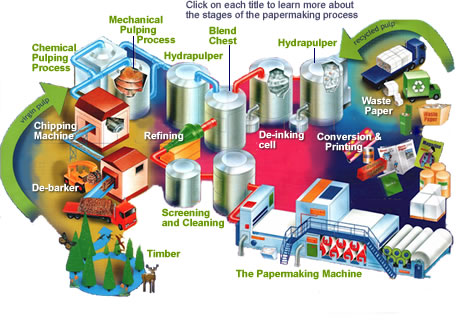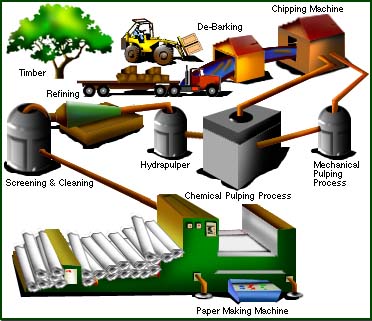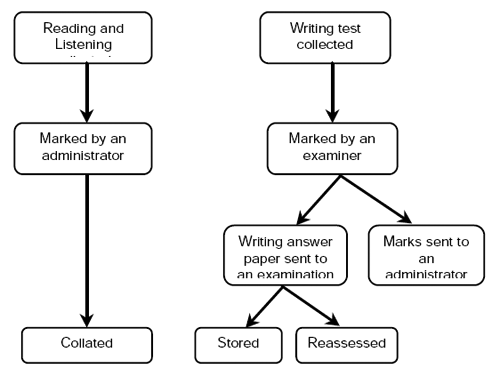Software Development Life Cycle Models
I was asked to put together this high-level and traditional software
life cycle information as a favor for a friend of a friend, so I
thought I might as well share it with everybody.
The General Model
Software life cycle models describe phases of the software cycle and
the order in which those phases are executed. There are tons of
models, and many companies adopt their own, but all have very similar
patterns. The general, basic model is shown below:
Each phase produces deliverable required by the next phase in the
life cycle. Requirements are translated into design. Code
is produced during implementation that is driven by the design.
Testing verifies the deliverable of the implementation phase against
requirements.
Requirements
Business requirements are gathered in this phase. This phase
is the main focus of the project managers and stake holders.
Meetings with managers, stake holders and users are held in order to
determine the requirements. Who is going to use the system?
How will they use the system? What data should be input into the
system? What data should be output by the system? These are
general questions that get answered during a requirements gathering
phase. This produces a nice big list of functionality that the
system should provide, which describes functions the system should
perform, business logic that processes data, what data is stored and
used by the system, and how the user interface should work. The
overall result is the system as a whole and how it performs, not how it
is actually going to do it.
Design
The software system design is produced from the results of the
requirements phase. Architects have the ball in their court
during this phase and this is the phase in which their focus
lies. This is where the details on how the system will work is
produced. Architecture, including hardware and software,
communication, software design (UML is produced here) are all part of
the deliverable of a design phase.
Implementation
Code is produced from the deliverable of the design phase during
implementation, and this is the longest phase of the software
development life cycle. For a developer, this is the main focus
of the life cycle because this is where the code is produced.
Implementation my overlap with both the design and testing
phases. Many tools exists (CASE tools) to actually automate the
production of code using information gathered and produced during the
design phase.
Testing
During testing, the implementation is tested against the
requirements to make sure that the product is actually solving the
needs addressed and gathered during the requirements phase. Unit
tests and system/acceptance tests are done during this phase.
Unit tests act on a specific component of the system, while system
tests act on the system as a whole.
So in a nutshell, that is a very basic overview of the general
software development life cycle model. Now lets delve into some
of the traditional and widely used variations.
Waterfall Model
This is the most common and classic of life cycle models, also
referred to as a linear-sequential life cycle model. It is very
simple to understand and use. In a waterfall model, each phase
must be completed in its entirety before the next phase can
begin. At the end of each phase, a review takes place to
determine if the project is on the right path and whether or not to
continue or discard the project. Unlike what I mentioned in the
general model, phases do not overlap in a waterfall model.
Advantages
- Simple and easy to use.
- Easy to manage due to the rigidity of the model – each phase has specific deliverables and a review process.
- Phases are processed and completed one at a time.
- Works well for smaller projects where requirements are very well understood.
Disadvantages
- Adjusting scope during the life cycle can kill a project
- No working software is produced until late during the life cycle.
- High amounts of risk and uncertainty.
- Poor model for complex and object-oriented projects.
- Poor model for long and ongoing projects.
- Poor model where requirements are at a moderate to high risk of changing.
V-Shaped Model
Just like the waterfall model, the V-Shaped life cycle is a
sequential path of execution of processes. Each phase must be
completed before the next phase begins. Testing is emphasized in
this model more so than the waterfall model though. The testing
procedures are developed early in the life cycle before any coding is
done, during each of the phases preceding implementation.
Requirements begin the life cycle model just like the waterfall
model. Before development is started, a system test plan is
created. The test plan focuses on meeting the functionality
specified in the requirements gathering.
The high-level design phase focuses on system architecture and
design. An integration test plan is created in this phase as well
in order to test the pieces of the software systems ability to work
together.
The low-level design phase is where the actual software components
are designed, and unit tests are created in this phase as well.
The implementation phase is, again, where all coding takes
place. Once coding is complete, the path of execution continues
up the right side of the V where the test plans developed earlier are
now put to use.
Advantages
- Simple and easy to use.
- Each phase has specific deliverable.
- Higher chance of success over the waterfall model due to the development of test plans early on during the life cycle.
- Works well for small projects where requirements are easily understood.
Disadvantages
- Very rigid, like the waterfall model.
- Little flexibility and adjusting scope is difficult and expensive.
- Software is developed during the implementation phase, so no early prototypes of the software are produced.
- Model doesn’t provide a clear path for problems found during testing phases.
Incremental Model
The incremental model is an intuitive approach to the waterfall
model. Multiple development cycles take place here, making the
life cycle a “multi-waterfall” cycle. Cycles are divided up into
smaller, more easily managed iterations. Each iteration passes
through the requirements, design, implementation and testing phases.
A working version of software is produced during the first
iteration, so you have working software early on during the software
life cycle. Subsequent iterations build on the initial software
produced during the first iteration.
Advantages
- Generates working software quickly and early during the software life cycle.
- More flexible – less costly to change scope and requirements.
- Easier to test and debug during a smaller iteration.
- Easier to manage risk because risky pieces are identified and handled during its iteration.
- Each iteration is an easily managed milestone.
Disadvantages
- Each phase of an iteration is rigid and do not overlap each other.
- Problems may arise pertaining to system architecture because not
all requirements are gathered up front for the entire software life
cycle.
Spiral Model
The spiral model is similar to the incremental model, with more
emphases placed on risk analysis. The spiral model has four
phases: Planning, Risk Analysis, Engineering and Evaluation. A
software project repeatedly passes through these phases in iterations
(called Spirals in this model). The baseline spiral, starting in
the planning phase, requirements are gathered and risk is
assessed. Each subsequent spirals builds on the baseline spiral.
Requirements are gathered during the planning phase. In the
risk analysis phase, a process is undertaken to identify risk and
alternate solutions. A prototype is produced at the end of the
risk analysis phase.
Software is produced in the engineering phase, along with testing at
the end of the phase. The evaluation phase allows the customer to
evaluate the output of the project to date before the project continues
to the next spiral.
In the spiral model, the angular component represents progress, and the radius of the spiral represents cost.
Advantages
- High amount of risk analysis
- Good for large and mission-critical projects.
- Software is produced early in the software life cycle.
Disadvantages
- Can be a costly model to use.
- Risk analysis requires highly specific expertise.
- Project’s success is highly dependent on the risk analysis phase.
- Doesn’t work well for smaller projects.
And that’s it. If you have any input, especially your views on
advantages and disadvantages of any particular model, feel free to
leave them in the comments and I can add them to my copy.
Some link about Software Development Life Cycle Models
Overview: http://www.oxagile.com/article/228-software-development-models
Lecture: http://www.ccs.neu.edu/home/matthias/670-s05/Lectures/2.html
Fun Example: http://my.opera.com/nhanbh/blog/software-development-process
Vietnamese link: http://www.aptech.edu.vn/chitiet.php?id=292
http://www.htmedsoft.com/kythuat/congngheweb/congngheweb016.htm











 iễn đàn có những thông tin rất bổ ích cho các kỳ thi chuẩn hoá cũngnhư việc nộp đơn du học ở Hoa Kỳ. Các bậc học đại học, sau đại học,thạc sỹ, tiến sỹ, các chuyên ngành như Luật được thể hiện khá đầy đủ vàchi tiết.
iễn đàn có những thông tin rất bổ ích cho các kỳ thi chuẩn hoá cũngnhư việc nộp đơn du học ở Hoa Kỳ. Các bậc học đại học, sau đại học,thạc sỹ, tiến sỹ, các chuyên ngành như Luật được thể hiện khá đầy đủ vàchi tiết.